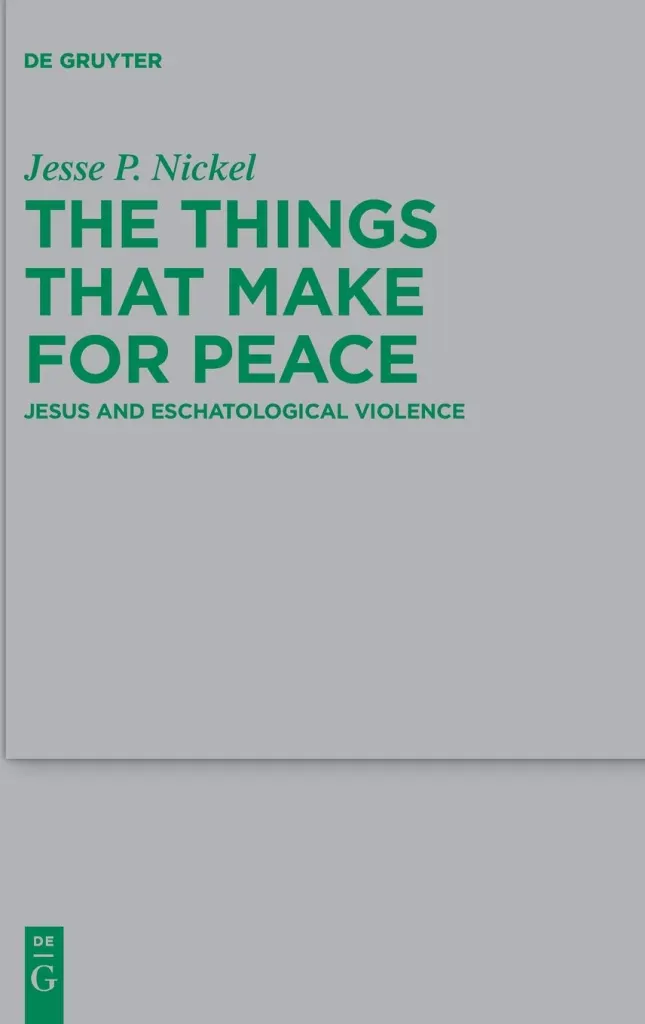2024.03.02 | Jesse P. Nickel. The Things that Make for Peace: Jesus and Eschatological Violence. BZNW 244. Berlin: de Gruyter, 2021.
Review by Kendall A. Davis, University of Edinburgh.
In this revision of his PhD thesis, Jesse Nickel seeks to answer the following question: “how does understanding eschatology and violence together … enable us to make better sense of the presence and/or absence of violence in Jesus’ life and ministry?” (p. 3). In particular, Nickel seeks to refute what he calls the “seditious Jesus hypothesis” (SJH), the idea that the historical Jesus was really a violent revolutionary and that Jesus’ rejections of violence are later additions to the Jesus tradition. Scholars who hold to the SJH, according to Nickel, include S. G. F. Brandon, Dale Martin, and Fernando Bermejo-Rubio. Nickel argues that such perspectives fail in large part because they misunderstand Jewish eschatology. In particular, they assume that eschatology is “other-worldly” and therefore “irrelevant to ‘this-worldly’ matters” (p. 5). By contrast, Nickel argues that “certain elements of Jewish eschatology … inherently involved violence; and that such expectations played a motivational role in the revolutionary violence that was frequent during the Second Temple period” (p. 7). Nickel calls such violence “eschatological violence” and argues that Jesus’ “nonviolence” should be understood as a rejection of this pervasive concept of eschatological violence.

